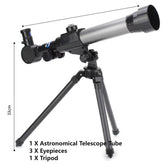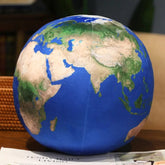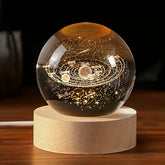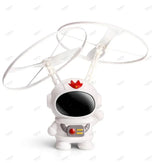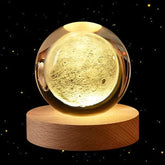The Moon: Earth’s Timeless Companion
The Moon, our nearest celestial neighbor, has captivated humanity for millennia — not just as a beautiful orb lighting the night sky but as a profound influence on Earth and human culture. Though often taken for granted, the Moon’s story is rich with scientific wonder, historical significance, and ongoing mystery.
Origins: A Violent Birth in Space
The leading theory about the Moon’s origin is the Giant Impact Hypothesis. Roughly 4.5 billion years ago, not long after Earth formed, a Mars-sized protoplanet (sometimes called Theia) collided with the young Earth. The impact was so massive that it ejected a huge amount of debris into orbit around Earth, which eventually coalesced and cooled to form the Moon.
This violent birth explains why the Moon’s composition is strikingly similar to Earth’s outer layers, yet it lacks a significant iron core — because it formed primarily from Earth’s crust and mantle material.
The Moon’s Physical Characteristics
The Moon’s diameter is about 3,474 km, roughly one-quarter of Earth’s diameter, making it the largest natural satellite relative to its planet in the Solar System. Its gravity is only about 1/6th that of Earth, which is why astronauts could bounce and move so uniquely during the Apollo missions.
The lunar surface is a landscape of extremes — vast plains of solidified lava called maria, rugged highlands, and countless craters from billions of years of meteorite impacts. Without an atmosphere, the Moon’s surface experiences drastic temperature swings, from around +127°C (260°F) during lunar day to -173°C (-280°F) at night.

The Moon’s Influence on Earth
Beyond its visual beauty, the Moon profoundly impacts Earth in several ways:
-
Tides: The gravitational pull between Earth and the Moon creates tides in our oceans. These tides are essential for coastal ecosystems and have historically shaped marine life and human settlement patterns.
-
Stabilizing Earth’s Axis: The Moon’s gravity stabilizes the tilt of Earth’s axis, which in turn stabilizes our climate over long timescales. Without the Moon, Earth’s tilt could vary wildly, potentially making life less hospitable.
-
Biological Rhythms: Many species have evolved biological cycles linked to the lunar phases, such as spawning or migration patterns.
The Moon in Human Culture and Exploration
The Moon has been a source of mythology, art, and inspiration across cultures worldwide. From the lunar calendars of ancient civilizations to the romantic poetry of countless poets, it embodies mystery and wonder.

The 20th century saw humanity’s dreams realized with the Apollo missions. Starting in 1969, astronauts explored the lunar surface firsthand, collecting samples, conducting experiments, and marking a giant leap in space exploration.
Today, renewed interest in the Moon — with projects like NASA’s Artemis program and international lunar missions — aims to establish a sustainable human presence, potentially using the Moon as a stepping stone for deeper space exploration.
Why the Moon Still Matters
In an era of rapid technological progress and space ventures reaching Mars and beyond, the Moon remains crucial. It’s not just a relic of ancient collisions but a dynamic partner in understanding Earth’s past and future.

Its regolith may contain resources like water ice, essential for future lunar bases and fuel production. Moreover, the Moon serves as a natural laboratory for studying space weathering, planetary geology, and the origins of the Solar System.
The Moon is more than a satellite; it’s a silent witness to the cosmic dance of planets and a beacon for human curiosity and ambition. As we look up, the Moon invites us to explore, to learn, and to dream.







